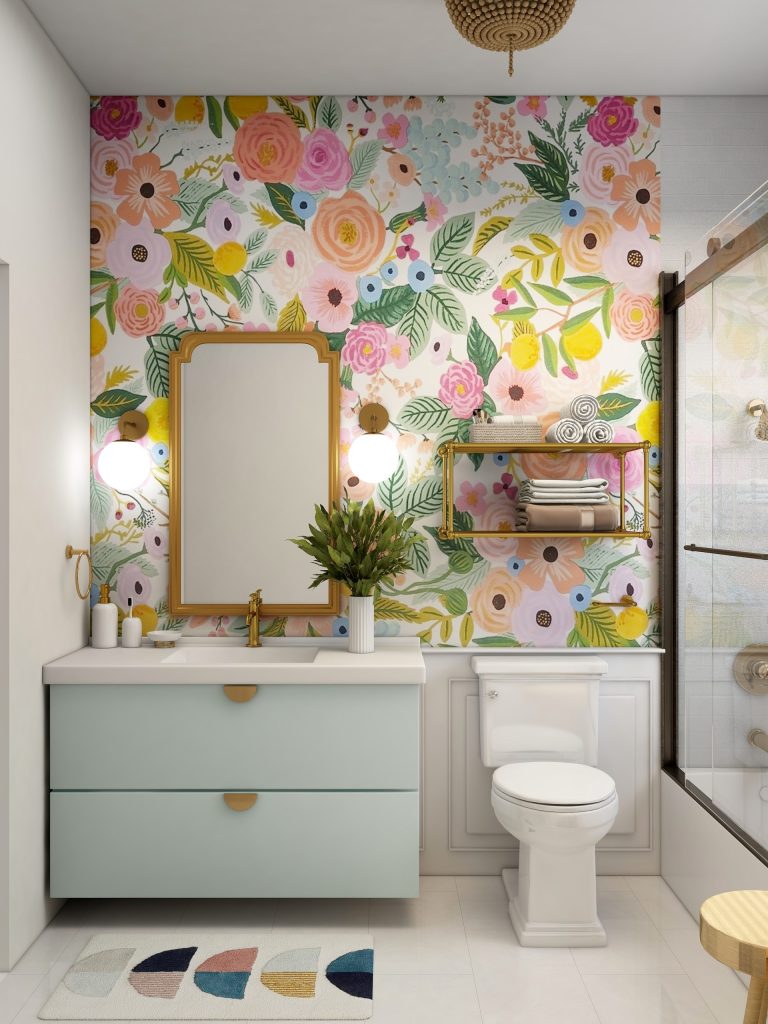Whether you’re venturing out in the wallpaper business or refurbishing your office space, you need to equip yourself and your team with reliable and efficient wallpaper tools to create an exquisitely finished installation. Having the right tools, the process of remodeling walls can be unceremoniously straightforward. This comprehensive guide will introduce you to exceptional line tools for removing old wallpaper, repairing, and installing a new set of wallpaper.
Tools for Old Wallpaper Removal

As with any renovation project, you must always clean and prepare your tools and the space or room to remove the wallpaper. You can begin by removing any items hanging from the wall and moving all the furniture in the center or outside the work area if possible.
It would be best to ensure that the room’s power source is turned off and cover the electrical outlets and light switches with painter’s tape. Most office spaces have wall panel doors, but installing hidden flange wall access panels is best if you need one that can blend seamlessly to its surroundings.
Identifying whether you have plaster or drywalls is necessary before you start peeling off the wallpaper. Use a putty knife to loosen a corner and try to peel it off carefully. If it comes right off, then you have an easy, peelable wallpaper. However, if the wallpaper peels away but leaves a paper backing, you are dealing with an outdated wallpaper that you need to remove with water and chemical remover.
Once you have done all the necessary preparations for removing wallpaper, you need the ideal tools required for this process.

1. Drop Cloths
Before starting any project, you must ensure that you remove any furniture or appliance near the work area. The floor should also need to be adequately covered to protect it from any possible spillage. It is ideal if you hang the wallpapers yourself, but it is also necessary to avoid unnecessary expenditure and repair.
For both installation and removal, it is advisable to choose non-skid drop cloths over the plastic ones since they can get slippery when dripped with remover.
2. Step Ladder
Step ladders are necessary when working with wallpapers for reaching high areas such as the ceiling-adjacent wall area. You may use a small podium ladder for residential properties that provides you a boost and a stable base. As for commercial or office spaces, it is best to use a 6 – 8 ft. step ladder.
3. Sponge
Sponges may look simple, but it is incredibly reliable when removing and installing wallpaper. The sponge offers flexibility and dependability since this item alone can ensure that the wallpaper is fully saturated to quickly release the glue during the removal stage. A large sponge prevents drips from running down the wall and pooling on the baseboard. You are better off using a large sponge for this task since it will do a great job of holding excess water or cleaning solutions.
4. Scraper
Detaching wallpaper can often be a daunting task, but utilizing the right tools will effectively lessen its difficulty level regardless of how much wallpaper you need to remove. There’s nothing more basic and efficient than using a trusty scraper to detach large pieces of wallpaper without damaging the walls.
Scrapers are usually made of metal since it is sturdy enough. If you wish to use your scraper in the future, purchase replacement blades included so you can replace the edge when it starts to get dull. It is ideal to use a sharp scraper to increase productivity and decrease the chances of damaging your wall.
5. Wallpaper Scorer
Wallpaper scorer is a tool used in extracting wallpapers before applying the removal solution. The scorer makes the whole process fast and easy rather than forcibly removing the lining paper and tampering with the wall. This equipment punctures tiny holes in the paper, allowing the remover to reach the inside glue and dissolving it without affecting the wall and causing more damage.
Tools for Wallpaper Installation

Applying wallpaper is an excellent way to add color and texture to any room or office space. It typically comes in three installation types: peel and stick, unpasted (requires a separate glue), or pre-pasted. Pre-pasted wallpaper is easily relocatable and only requires water.
Similar to the process of removing wallpaper, you also need to cover light switches and electrical sockets with painter tape, move any furniture to the center or outside the room, and protect the floor with a drop cloth or protective plastic sheet. Make sure to switch off the power breaker before commencing any task since water is involved, and wipe the wall with a sponge to remove excess dust.
The first line of paper placement is the most crucial part of the installation process since it will indicate whether the entire application will be straight or crooked. It is easier to start in the corner and carefully work towards the other side of the room. To make this task easier, draw a plumb line that will guide the first piece.
Prepping the room and the wallpaper isn’t enough to ensure installation success. It would help if you also used the most efficient tools for the job.
1. Utility Knife
A utility knife is a reliable tool for hanging new wallpaper, as you will mainly use it to cut the wallpaper from the ceiling and along the baseboard. Utility knives are far more efficient than scissors during this process because the utility knife can easily glide through the lining paper so that there is no jagged edge.
Another benefit of using a box cutter is that they usually have multiple blades to remove once it becomes dull. Using blunt tools is highly discouraged to avoid your wallpaper from tearing up.
2. Plumb Line
A plumb line is a mandatory tool to ensure that your hanging wallpaper is entirely straight without any texture variation. Eyeballing the wall hoping to set your wallpaper on a straight angle isn’t as reliable as using a plumb line. Utilizing a plumb is highly recommended if you want to make sure that you have a perfectly straight vertical line when hanging the wallpaper.
3. Carpenter’s Level
Ensuring that the wallpaper is hung level is crucial during the installation process to get the best outcome for your room or office space. Many levels are available in the market, but you will want to invest in longer levels since the shorter types make the whole process complicated.
4. Paste Brush

If the wallpaper you bought is not pre-pasted, you need to apply the paste yourself using a handly paste brush. Many people settle for their old paintbrushes but using a dedicated tool for the job is highly preferred.
Paste brushes have more bristles to ensure that you have a nice, even coat when brushing paste on the lining paper. Moreover, the bristles are incredibly soft, allowing you to bend and move the brush while you work efficiently.
5. Smoothing Brush or Tool
A smoothing brush is imperative for obtaining the smoothest finish possible when installing wallpaper. These brushes have unbelievably soft bristles that quickly smooth out air bubbles and extra paste that may leave a lump.
This smoothing equipment comes with angled edges so that you can effortlessly smooth out the corners of your room. Due to its reliable nature, it is vital to keep your smoothing brush in top condition by washing it in warm water every after use.
6. Seam Roller
Seam rollers look very similar to a regular paintbrush except for the obvious fact that it is much smaller and has a firmer surface. This tool is mainly for sealing off visible seams on the wallpaper by adequately pressing it down.
Using a seam roller is very easy and only involves gently pressing the roller onto the wall as you carefully roll it up and down the seams. Excess paste might ooze out during the process, so make sure to occasionally wipe the roller so it doesn’t get any build-up.
However, do take note that the seam roller is ideal for use on regular wallpaper, but if you purchased anything that is distinctly fragile or embossed, then you might want to set this tool down.
When it comes to renovating or enhancing the appearance of your room or office space, you can rely on using wallpapers to suit your aesthetic and style. Finding the right design is virtually endless, with a wide selection of colors, patterns, and textures to select from, but with this much variation, you most certainly will find the one you need.
Thanks to bestaccessdoors.com for consulting.
























